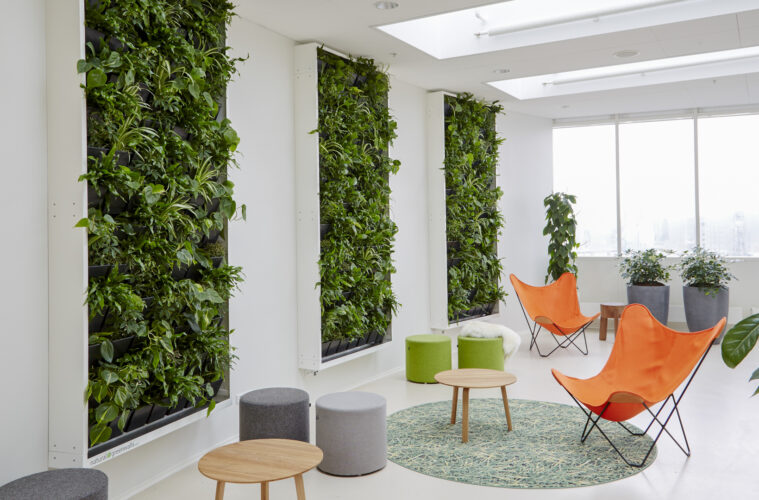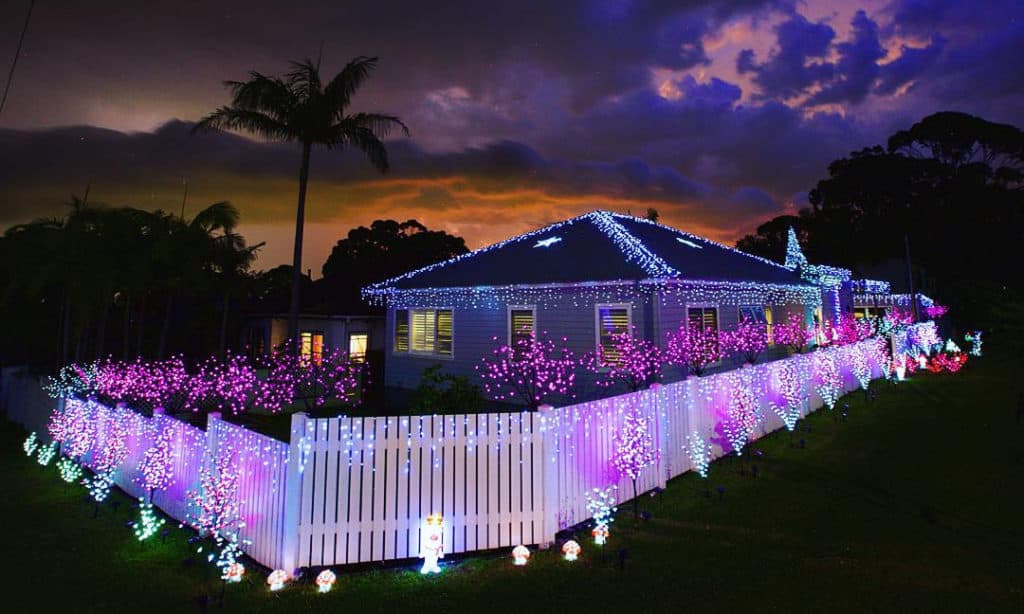In recent years, green walls are also known as living walls, vertical gardens or plant walls. Which are becoming a popular new trend in the built environment. Incorporating live nature into urban surroundings not only improves the aesthetics of the area, but it also serves a variety of additional uses.
There is a perfect green wall for practically every situation, whether indoors or outdoors, free-standing or wall-attached. But how are green walls formed, and how can you tell the difference between the numerous types? We’ve covered everything in this post. Readout!
Green Walls Means…
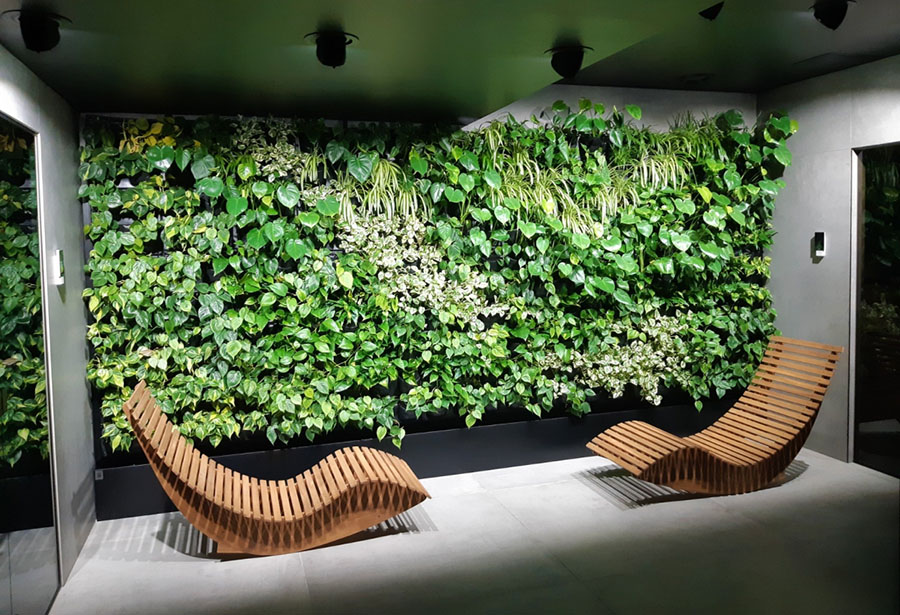
source: 4naturesystem.com
Green walls are vertical constructions that are adorned with various sorts of plants or other vegetation. Greenery is frequently planted in a growing medium made up of soil, stone, or water. Because the walls include living plants, they typically have built-in watering systems.
Green walls are distinct from facades, which are frequently seen growing up the outer walls of buildings to provide structural support. The growing medium of green walls is on the surface or structure of the wall, whereas facades are rooted in the ground. Furthermore, façade greenery might take quite a long time to grow sufficiently to cover a complete wall, whereas green walls can be pre-grown.
Smart and active green walls frequently resemble traditional green walls, but they fulfil additional functions owing to the application of artificial intelligence and technology. A smart living wall’s elements may be automated and monitored, boosting the impact.
Aside from the aesthetic and biophilic benefits of all green walls, smart and active green walls may provide natural air filtration and humidification through a mix of improved air circulation and specialised growth.
Function Of Green Walls
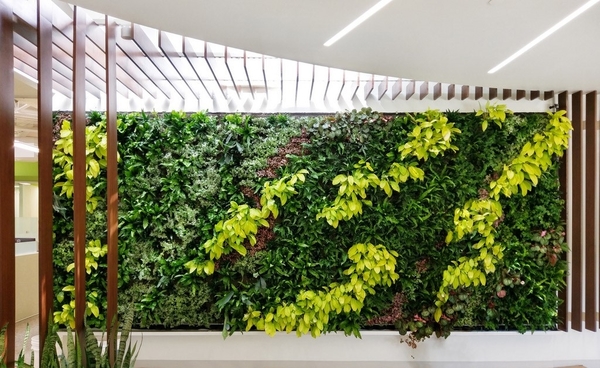
source: buildings.com
Green wall structure is divided into the following components: back framing/support structure, watering system, planting media, and plants. Much relies on who instals the green wall system in terms of the green wall itself. Some green walls feature concealed pipes that offer self-watering to keep the plants healthy, whilst others must be watered by hand.
Benefits Of Green Walls
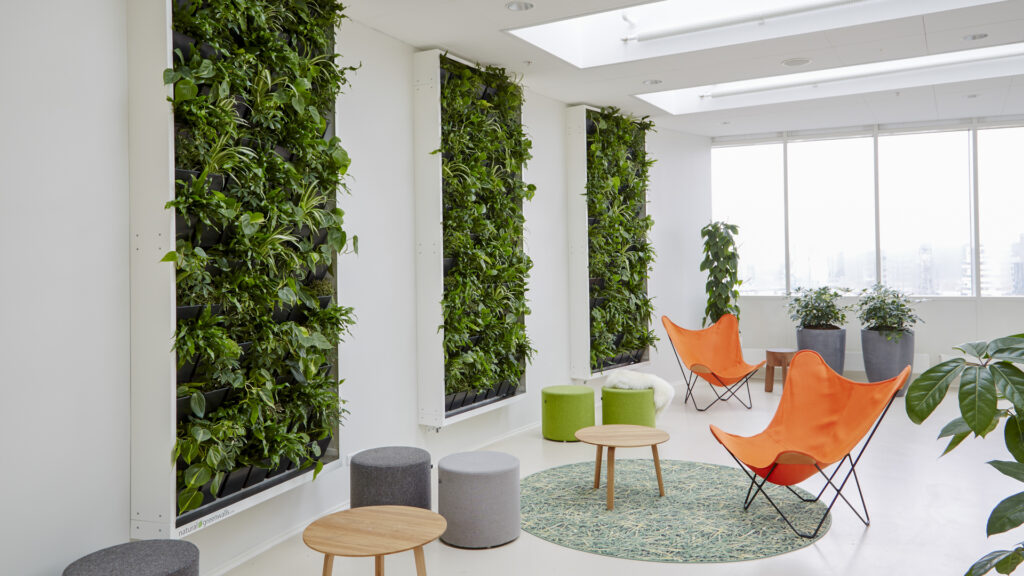
source: naturalgreenwalls.com
Vertical gardens and green roofs are the only solutions for cities with space limits and expensive property costs as cities continue to urbanise at the expense of open areas and trees.
Green walls have the advantage of adding freshness to concrete structures despite space limits. Plants absorb carbon dioxide and some other pollutants naturally, enhancing air quality. Green walls may also be used as a fantastic privacy screen since they not only enrich the view but also work as a sound barrier, absorbing road noise pollution. Green walls and plants in general assist to create a sense of well-being, with the belief that having access to nature in the office helps people work better and feel better.
It is beneficial for homes and offices to have nature at arm’s reach without having to worry about space limits. The outdoor vertical garden adds a layer of protection to the structure. During the summer, it absorbs the heat in the region, providing a pleasant climate. The interior gap between the building walls and the green wall panels significantly minimizes wall overheating and the temperature of the building.
Green Walls Are Environment friendly!
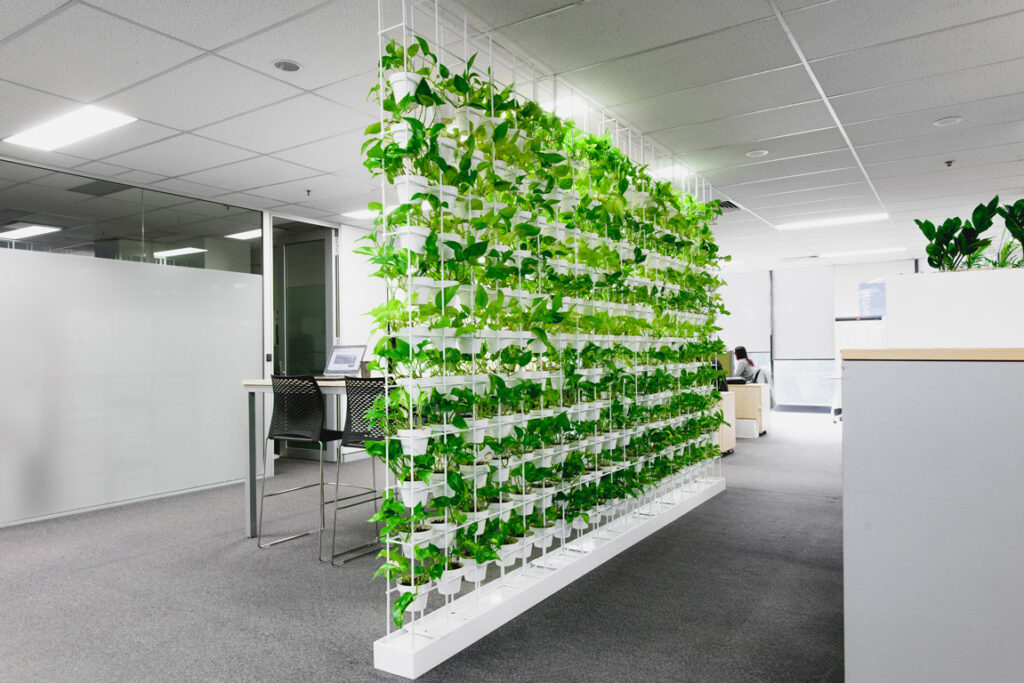
source: ambiusindoorplants.com.au
Big Yess Green walls are environment friendly with other major benefits.
Better air quality: Plants operate as natural air purifiers by absorbing some of the pollutants that are emitted in metropolitan areas. They can also help to slow the spread of suspended particulate matter, which is the source of many respiratory problems.
Low Urban Heat Island: Cities have greater temperatures than non-urbanized places. Green walls absorb heat reflected from buildings, lowering ambient temperatures and heat waves.
Reduced Energy Usage: Vertical gardens naturally keep structures cooler during the summer, lowering the need for air conditioning and the burden on HVAC energy consumption.

